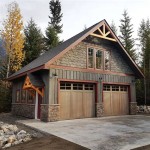Painting a Metal Garage Door to Resemble Wood: A Comprehensive Guide
Achieving the aesthetic appeal of a wooden garage door without the associated maintenance demands is a common aspiration for homeowners. Painting a metal garage door to convincingly mimic the look of wood provides a cost-effective and practical solution. This article will detail the necessary steps involved in this transformative process, encompassing preparation, painting techniques, and the essential materials required to create a durable and realistic faux wood finish.
The visual impact of a garage door significantly contributes to the overall curb appeal of a residence. Authentic wood garage doors, while aesthetically pleasing, necessitate regular upkeep, including sealing, staining, and potential repairs due to weathering and insect damage. Metal garage doors, Conversely are known for their durability and resistance to these issues. By employing specialized paints and techniques, homeowners can successfully replicate the visual texture and color variations of wood on a metal surface, achieving the desired aesthetic without compromising on longevity.
Key Point 1: Preparing the Metal Garage Door for Painting
Proper preparation is the cornerstone of any successful painting project, and mimicking a wood finish on metal is no exception. The surface must be meticulously cleaned, sanded, and primed to ensure optimal paint adhesion and a smooth, even base for the subsequent wood graining process. The following steps detail the preparation procedure:
Cleaning: Begin by thoroughly cleaning the garage door’s surface. Remove any dirt, grime, mildew, and loose paint using a solution of warm water and mild detergent. A pressure washer can be employed for larger doors but should be used with caution to avoid damaging the metal or any existing paint. Pay particular attention to crevices and areas where debris tends to accumulate.
Rinsing: After cleaning, meticulously rinse the entire surface with clean water to remove any residual detergent. Any remaining soap can interfere with paint adhesion. Allow the door to dry completely before proceeding to the next step. A sunny day with good ventilation will expedite the drying process.
Sanding: Once the door is dry, inspect the surface for any rust, peeling paint, or imperfections. Address these issues by sanding the affected areas using medium-grit sandpaper (around 120-grit). Feather the edges of the sanded areas to create a smooth transition with the surrounding paint. For particularly stubborn rust, a wire brush may be necessary. After sanding, wipe down the entire surface with a tack cloth to remove any sanding dust. This step is crucial for achieving a smooth, professional finish.
Priming: Applying a primer is essential for ensuring proper paint adhesion and preventing rust. Choose a high-quality, rust-inhibiting primer specifically formulated for metal surfaces. Using a brush, roller, or spray gun, apply a thin, even coat of primer to the entire garage door. Ensure that all surfaces, including edges and corners, are adequately covered. Allow the primer to dry completely according to the manufacturer's instructions. This may require several hours or even overnight.
Addressing Dents and Imperfections: While minor imperfections can sometimes be incorporated into the "wood grain" effect, significant dents or damage should be repaired before priming. Automotive body filler can be used to fill in dents and create a smooth surface. Follow the manufacturer's instructions carefully when applying and sanding body filler. After sanding, prime the repaired areas before proceeding with the base coat.
Key Point 2: Applying the Base Coat and Simulating Wood Grain
The base coat provides the foundation for the faux wood finish. Selecting the appropriate base color is critical for achieving a realistic look. Typically, a medium to dark brown color is used to mimic the underlying tones of wood. The wood grain effect is achieved through various techniques, often involving specialized tools and glazes.
Selecting the Base Coat Color: Choose a high-quality exterior latex paint in a shade that resembles the base color of the wood you wish to replicate. Consider the specific wood type you are emulating (e.g., oak, walnut, cedar) and select a corresponding brown tone. Samples can be tested on a small, inconspicuous area of the garage door to ensure the desired color match. A satin or semi-gloss finish is generally recommended for the base coat.
Applying the Base Coat: Using a brush, roller, or spray gun, apply a thin, even coat of the chosen base paint to the primed garage door. Avoid applying the paint too thickly, as this can lead to drips and an uneven finish. Allow the base coat to dry completely according to the manufacturer’s instructions. Depending on the color and opacity of the paint, a second coat may be necessary. If applying a second coat, allow the first coat to dry completely before proceeding.
Creating the Wood Grain Effect: Several methods can be employed to create the wood grain effect. One common technique involves using a wood graining tool, which is a rubber or plastic tool designed with a wood grain pattern. This tool can be used in conjunction with a wood graining glaze to transfer the pattern onto the painted surface.
Using a Wood Graining Tool: Apply a thin, even coat of wood graining glaze over the dried base coat. While the glaze is still wet, press the wood graining tool onto the surface and rock it back and forth to transfer the wood grain pattern. Overlap each pass slightly to create a continuous grain. Experiment with different angles and pressures to achieve a more natural, varied look. Clean the wood graining tool frequently with a damp cloth to prevent glaze buildup. Practice on a piece of cardboard or scrap metal before applying the technique to the garage door.
Alternative Wood Graining Techniques: Other methods for creating a wood grain effect include using a rag rolling technique, where a crumpled rag is used to dab or drag across the wet glaze, creating a textured pattern reminiscent of wood grain. A sea sponge can also be used to create a similar effect. Alternatively, a specially designed wood graining brush can be used to paint individual wood grain lines onto the surface. These techniques require practice and a steady hand but can produce highly realistic results.
Layering Colors for Depth: For increased realism, consider layering different shades of brown glaze to create depth and variation in the wood grain. Apply a lighter glaze in some areas and a darker glaze in others to mimic the natural color variations found in real wood. Blending the different glazes together will create a more seamless and natural look.
Key Point 3: Sealing and Protecting the Faux Wood Finish
Once the wood grain effect has been achieved and the glaze has dried completely, it is imperative to seal the painted surface with a clear topcoat. This protective layer will shield the faux wood finish from the elements, prevent fading, and enhance its durability. The selection of the appropriate sealant is crucial for ensuring long-term protection and preserving the aesthetic appeal of the garage door.
Selecting a Protective Topcoat: Choose a high-quality exterior clear coat specifically designed for painted surfaces. A polyurethane-based topcoat is generally recommended for its durability and resistance to UV damage, moisture, and abrasion. Consider the desired sheen level for the topcoat. A satin or semi-gloss finish is typically preferred, as it provides a subtle sheen without being overly glossy. A matte finish can also be used for a more natural, understated look.
Applying the Topcoat: Before applying the topcoat, ensure that the painted surface is clean and dry. Remove any dust or debris with a tack cloth. Using a brush, roller, or spray gun, apply a thin, even coat of the chosen topcoat to the entire garage door. Avoid applying the topcoat too thickly, as this can lead to drips and an uneven finish. Pay particular attention to edges and corners, ensuring that all surfaces are adequately covered. Allow the topcoat to dry completely according to the manufacturer's instructions. This may require several hours or even overnight.
Applying Multiple Coats for Enhanced Protection: For enhanced protection and durability, consider applying two or even three coats of topcoat. Allow each coat to dry completely before applying the next. Lightly sand the surface between coats using fine-grit sandpaper (around 220-grit) to ensure a smooth, even finish and improve adhesion of subsequent coats.
Maintaining the Faux Wood Finish: To prolong the life and appearance of the faux wood finish, regular maintenance is recommended. Periodically wash the garage door with a mild detergent and water to remove any dirt, grime, or mildew. Inspect the surface for any signs of damage or wear, such as scratches or peeling topcoat. Touch up any damaged areas as needed to prevent further deterioration. Reapply a fresh coat of topcoat every few years to maintain the protective barrier and preserve the aesthetic appeal of the garage door.
Considering Decorative Hardware: To further enhance the realistic appearance of the faux wood garage door, consider adding decorative hardware, such as wrought iron handles, hinges, and clavos. These embellishments can significantly contribute to the overall aesthetic and create a more authentic wood-like appearance. Choose hardware that complements the style and color of the faux wood finish.
By following these detailed steps and carefully selecting the appropriate materials, homeowners can successfully transform a metal garage door into a convincing imitation of wood, enhancing the curb appeal of their residence and enjoying the aesthetic benefits of wood without the associated maintenance demands.

Faux Finishing A Garage Door To Look Like Wood Roots Wings Furniture Llc

Create A Faux Wood Garage Door With Gel Stain Crazy Life Littles

Have Your Garage Door Faux Finished To Simulate Wood Yes Most Of These Photos Are Standard Metal Paint Doors

Create A Faux Wood Garage Door With Gel Stain Crazy Life Littles

The Faux Process S And Faq Fauxkc

Faux Wood Garage Door Tutorial Prodigal Pieces

Diy Garage Door Makeover Gel Stain To Look Like Wood House Home

How To Faux Wood Grain On Garage Door Mural Joe

Faux Wood Paint On Metal Garage Door Home Diy

Diy Garage Door Makeover With Gel Stain Fresh Mommy Blog
Related Posts








